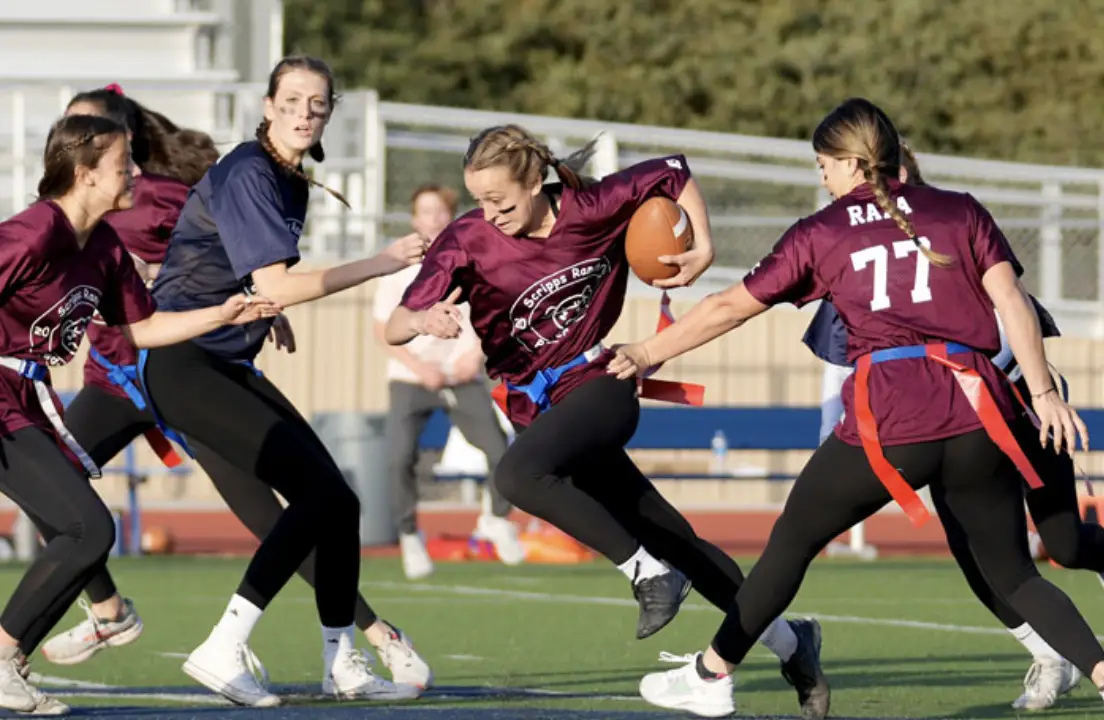Powderpuff football is more than just a sport; it’s a cultural phenomenon that challenges traditional gender roles and promotes teamwork, camaraderie, and empowerment among female athletes. Originating as a light-hearted alternative to traditional football, powderpuff has evolved into a spirited and competitive game played by women of all ages. In this blog post, we’ll dive into the world of powderpuff football, exploring its history, rules, and the impact it has on empowering women on and off the field.
A Brief History of Powderpuff Football
Powderpuff football emerged in the 1940s as a response to the lack of opportunities for women to participate in traditional tackle football. It was initially a playful and casual activity, often associated with homecoming or charity events, where female students would don football gear, typically borrowed from the school’s male football team, and engage in a friendly game.
Over the years, powderpuff football gained popularity in high schools and colleges across the United States. It became an annual tradition in many institutions, often coinciding with homecoming festivities, where female students formed teams and competed against each other.
Rules of the Game
Powderpuff football typically follows a modified set of rules to ensure safety and accommodate players of varying skill levels. Some common rules include:
- Flag Football: Instead of tackling, powderpuff games often use flag football rules, where players wear flags attached to belts, and opponents must remove the flag to “tackle” the ball carrier.
- No Contact: Physical contact is limited to blocking and non-aggressive maneuvers. Tackling or rough physical play is typically discouraged.
- Passing Game: Powderpuff games often emphasize the passing game, with restrictions on running plays to ensure a balanced and exciting match.
- Female Coaches: Many powderpuff games feature male football players as coaches, providing guidance and strategies to the female teams.
Empowering Women through Powderpuff
Powderpuff football goes beyond the field, empowering women in various ways:
- Breaking Stereotypes: Powderpuff challenges traditional gender roles by demonstrating that women can excel in sports traditionally dominated by men. It fosters a sense of equality and shows that women can be strong, athletic, and competitive.
- Building Confidence: Participating in powderpuff can boost self-confidence as women develop new skills, work as a team, and overcome challenges on the field.
- Promoting Inclusivity: Powderpuff is often open to players of all skill levels, making it an inclusive sport that welcomes women from diverse backgrounds and abilities.
- Creating Lifelong Bonds: The camaraderie and teamwork forged on the powderpuff field often lead to lasting friendships and a sense of community among participants.
- Leadership Opportunities: Powderpuff events require leadership, organization, and planning, offering women opportunities to take on leadership roles in coordinating and managing the games.
Conclusion
Powderpuff football is more than just a fun game; it’s a powerful platform for empowering women, challenging stereotypes, and fostering unity and camaraderie. It allows women to break free from traditional gender roles and showcase their athletic prowess while building confidence and lasting connections. As powderpuff continues to grow in popularity, it serves as a reminder that women can excel in any field they choose, even if that field is a football field covered in powder.
